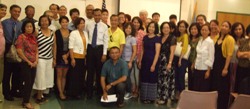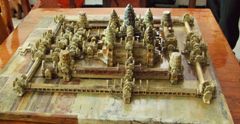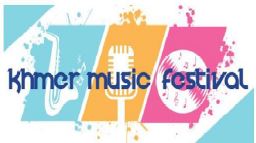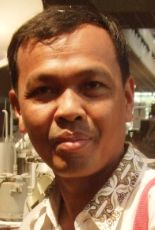The Ancient Khmer City of Koh Ker
- Prasat Pram
- Prasat Krahom
- Prasat Neag Khmao
- Prasat Bak
- Prasat Khna
- Prasat Damrei
- Prasat Chrap
- Prasat Chamres
- Prasat Banteay Pichorn
- Prasat Andong Kuk or Sralao
- Prasat Leung/Balang
- Prasat Thom
- Trapeang Andong Preng
- Prasat Chen
Overview
Angkor era is known to be rich, glorious, and powerful. There are plenty of temples that were built with various architectural infrastructures, by Khmer kings from generation to generation. Gradually, the kingdom kept expanding. New settlements were founded, old settlements were enlarged to become the center of culture, administration, and politic. Koh Ker covers a large area comprised of many different temples in varying state of ruin, but they illustrate the power and vision of the Khmer Empire during Angkor era (800AD – 1400AD) though presently lost in the jungle. It was briefly a capital city of the Khmer Empire during Angkor era. It is located in northern Cambodia, in Srayong Cheung village, Srayong commune, Kulen district, about 49 kilometers west of the provincial town of Thbeng Meanchey and is about 120 kilometers (75 mi) away from Siem Reap. The Koh Ker complex is on the Chhork Koki highland. The region is filled with jungle and sparsely populated. There are more than 180 sanctuaries found in a protected area of 81 square kilometers (31 sq mi). Most of them are hidden, not fully demined from decades of war making the area even inaccessible. So far, 96 temples have been found in Koh Ker area. These temples were not constructed near each other. Today, many of them are no longer standing; some overgrown by forest and many others are buried underground. Only about two dozen monuments can be visited by tourists.
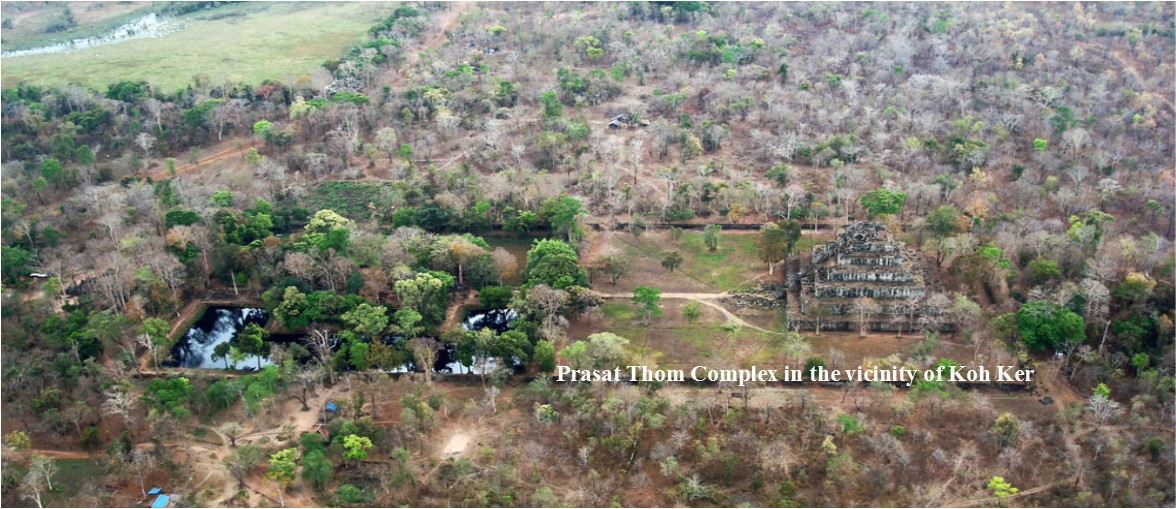
Prasat Thom known as Koh Ker temple was the state temple of Jayavarman IV (928-941). Jayavarman had an armed conflict with Harshavarman I and his brother Ishanavarman II. He moved from Angkor to Koh Ker and built his capital there, some 100 km to the northeast of Angkor. A stone inscription dated 921 states, "Jayavarman IV left the city of Yashodharapura to reign at Chok Gargyar taking the Devaraja with him." Devaraja means King of Kings. Another stone inscription found at Neang Khmao temple (a temple within Koh Ker area) said: after king Ishanavarman II died in 928 AC, Jayavarman IV announced himself as King of Khmer Empire and his new capital was at Koh Ker. Koh Ker was an impressive royal capital of Brahmanic temples, 35 meters high, and its design resembles a seven-stepped stupa. The temple faces west toward Angkor city. It was built to worship Treypuvanesvara, the god of happiness. This major achievement can prove that Jayavarman IV was a king of wealth and power.
Under his reign, Jayavarman IV implemented an ambitious building program. He built an enormous water-tank, Raha baray, and about forty magnificent temples. The center of the ancient city was in the north-east corner of the baray (water-tank). At least ten thousand inhabitants lived there during the rule of Jayavarman IV according inscriptions. One of the most significant temple complex is a double sanctuary: Prasat Thom and Prang. It is a seven tiered and 36-meter (118 ft) high pyramid decorated with impressive two-meter high shrines of linga. It is more likely served as a state temple of Jayavarman IV. The sanctuary follows a linear plan and not a concentric one like most of the temples of the Khmer kings. Some structures are parallel. Others are rectangular. Laterite, sandstone and brick were used those temples. Laterite and sandstone were of excellent quality. There were quarried in great quantities in the region and the transport of stones was no problem. The bricks produced were small, regular and very solid. A thin layer of organic mortar of unknown formula was used. Sanctuaries built with bricks stay in much better condition than those built with laterite. The roofs of some temples in Koh Ker were constructed from woods and were covered with tiles. Concerning wood materials abandoned for thousands of years, no wood artifacts are presently left.
Under Jayavarman IV the style of Koh Ker was developed and the art of sculpture reached a pinnacle. A great variety of wonderful statues were chiseled. Unfortunately, none of the immense, expressive and beautiful sculptures are left at the site. Because of its remoteness, the site of Koh Ker was plundered many times by looters. Sculptures of Koh Ker can be found not only in different museums but also in private collections. Masterpieces of Koh Ker are offered occasionally at auctions. These pieces in present times are considered stolen art. Some statues were put away by government organizations to protect them from looters. Many masterpieces of Koh Ker are now in the collection of the National Museum in Phnom Penh.

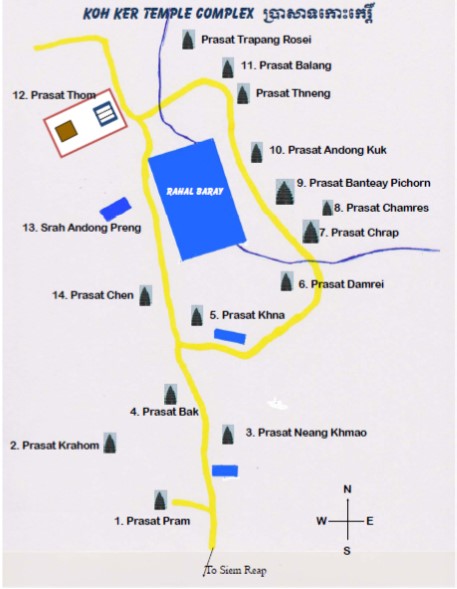
This city of Koh Ker, however, lasted for only 20 years. It was abandoned immediately after Jayavarman IV’s death. His successor, king Rajendravarman II, moved the capital back to Angkor with an unknown reason. Because of the returning of the capital from Koh Ker to Angkor, many historians believe that the Jayavarman IV was a "usurper king". It is because that monarchy in Cambodia at the time had no rule of succession. Many questions remain unanswered. What was really happening in tenth century concerning Jayavarman IV and his city, Koh Ker? What was the reason behind his relocation of the capital from Angkor to Koh Ker?
The most south sanctuary Koh Ker group is the Prasat Pram, so named to honor the five towers in the temple complex, two of them are spectacularly adorned in tree roots of the strangler fig. Of the five towers, three are made of brick standing in a row on the same platform. They face east. Two other towers are facing west and standing in front of the platform. One brick tower has diamond shaped holes in the upper part. This fact indicates that this tower once served as a fire sanctuary (fire cults were very important during the era of the Khmer kings). The other building is small, made of laterite and in bad condition comparing to the brick one. The bricks of small regular size are held together with an organic mortar of unknown composition. The temple is surrounded by a moat which was dug to protect the temples from invading enemies. The temple splendid view awaits visitors who dare to explore the hidden ancient city as this is the first stop. There was once stood a lingam at each tower . This beautifully carved lintels were looted. The temple gopuram (entrance) is on the east side and is now collapsed.
Sadly, just like many other temples throughout Cambodia, Prasat Pram has fallen into dereliction during years of civil wars, lootings and neglect. Nowadays there are some local tourists visit the sites to pray and to make food offerings to their ancestors during religious festivals.
2. Prasat Krahom
(see map above)
Prast Krahom is the second-largest structure at Koh Ker, which is named for the red bricks from which it is constructed. Sadly, none of the carved lions for which this temple was once known remain, but there are remains of stone archways, galleries, impressive stone carvings grace lintels, doorposts and slender window columns. The brick tower has an entryway with one real doors and one ornamental symbolic stone door. Each side of the temple has scattered carvings at its feet. Rows of fallen columns and fragments of statues are everywhere tantalizing glimpses into how the temple once would have appeared.
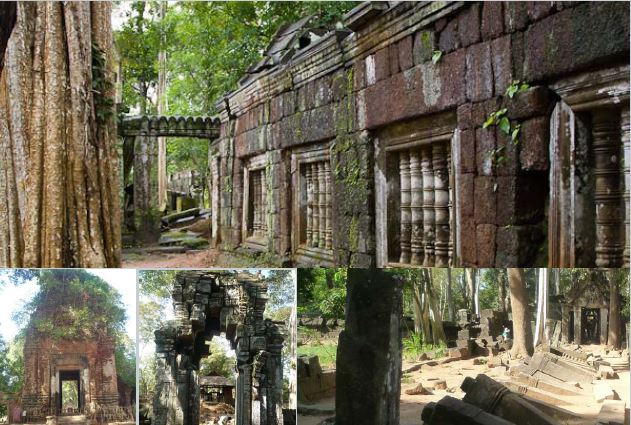
3. Prasat Neag Khmao
(see map above)
Further north is Prasat Neang Khmau. It is part of the large Koh Ker temple complex. Constructed of sandstone and brick in the style of Koh Ker, the temple was built by King Jayavarman IV (AD 921-941) in the 10th century for the worship of Brahmanism. The site originally consisted of three temples built side by side, however, only two are still standing, and both are heavily damaged. The temple got its romantic name from the dark bluish colour of its laterite. The eye-catching colour is caused by an oxidation process. The tower is built of laterite on a square sandstone basement. It is still in good condition. The main door opening to the west has a lintel carving depicting Brahma on a lotus, surmounted by a large undecorated pediment in the shape of an inversed U. Originally it had a wooden western Gopuram.
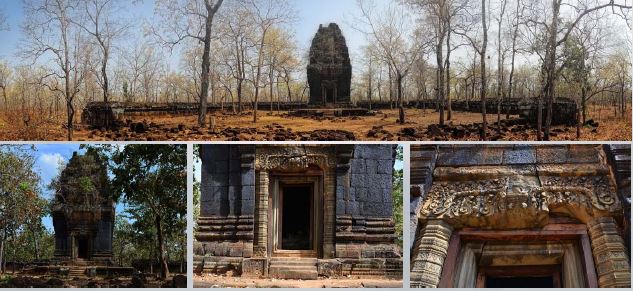
4. Prasat Bak
(see map above)
Prasat Bak is north of Prasat Neang Khmau and is on the west side of the road. It is small square sanctuary built of laterite, one side only measure 5 m (16 ft). it stands upright but it is not well preserved. Its roof has been collapsed. It is currently in a very bad condition. Though this temple, west of the road, is situated right in the center of the Southern Group, where temples are usually exactly on an east-west axis, Prasat Bak’s axis is slightly shifted towards the north-east, where the Rahal Baray is located. At least until 1960, the temple has been housing a colossal statue of Ganesha in form of a large stone elephant. Ganesha is a Hindu god, son of Shiva and Uma. He is depicted with a human body and an elephant's head. The head is now part of a private collection outside Cambodia. Prasat Bak is sometimes called Prasat B or simply monument B in the list of Lunet de Lajonquière.
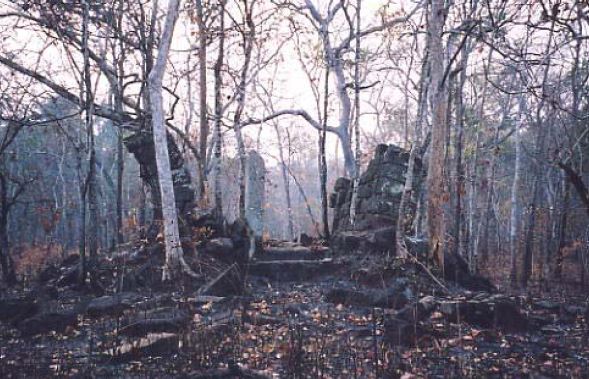
5. Prasat Khna
(see map above)
It is a small sanctuary decorated with beautiful sandstone carvings just off the road toward northern group. The temple is in ruin and is mostly covered up by forest. There is a brick library in the south-east corner of the Prasat Khna complex. There are a group of Lingas and a stone carved with peculiar scenes in high relief. At the edge of a stone are representations of the nine planets and eight mothers and eight great gods.

6. Prasat Damrei
(see map above)
Prasat Damrei means "Elephant temple", as it is noted for the large adorned sandstone elephants, facing outward at the four corners of the foundation of the central Prasat terrace. It has an enclosure and is standing on a high platform. On each of the four sides is a staircase with about ten steps which were once flanked by carving stone of lions. Today, only one remains. There are remarkable elephant sculpture carvings in sandstone standing at each corner. Only two remain. A Sanskrit inscription found at this temple gives evidence for a lingam on the top of the pyramid.
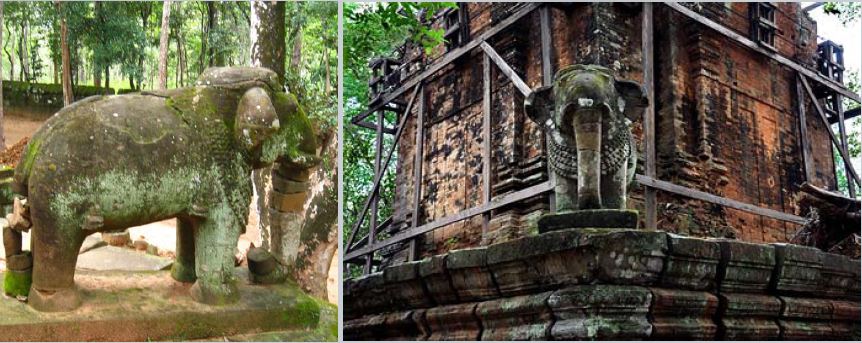

7. Prasat Chrap
(see map above)
Prasat Chrap has two concentric enclosures. In the center, three tall laterite towers stand in a row, all of them lost their front walls. There are two more brick sancturies (or maybe library buildings) facing the principal group, but only remnants left.
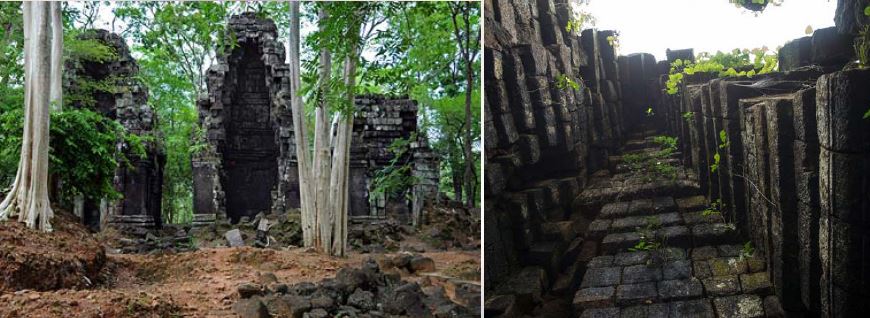
8. Prasat Chamres
(see map above)
Prasat Chamres is a single red brick tower, situated a little bit deeper in the jungle, in between the larger complexes of Prasat Banteay Pee Chean and Prasat Chrap. It can be seen in the distance before Prasat Chrap. The superstructure of Prasat Chamres is completely overgrown by forest. It is a jungle temple that is harder to reach.
9. Prasat Banteay Pichorn បន្ទាយពីរជាន់
(see map above)
The Prasat Banteay Pichorn (a two stories fortress) is in a ruin state. It has two concentric enclosures. The Laterite tower at the center belongs to the library. The long gallery was once surrounded by remnant eight smaller shrines made of bricks.
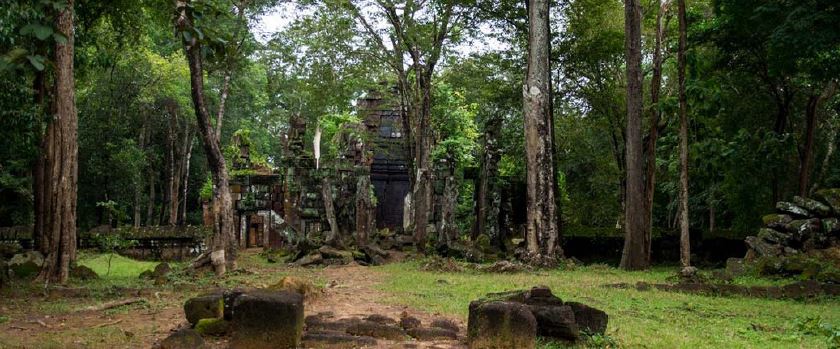

10. Prasat Andong Kuk or Sralao អណ្តូងគុកឬស្រឡៅ
(see map above)
Prasat Angdong Kuk or Sralao or Sralau located north of Prasat Pichorn. It is almost consumed by forest. It is made of sandstone and has a sculpture of lotus petals on the temple front. Although the door frame is damaged, most of the temple is in good condition.
11. Prasat Leung/Balang
(see map above)
Prasat Leung is a group of three huge single Prasats, all of them housing Shiva Lingas. The largest is called Prasat Leung Moi or Prasat Balang. It enshrines one of the largest and best preserved Lingam found in Cambodia. This Shiva-phallus is 2 m high and almost 1 m wide. Both Lingam and Yoni were carved out of the bedrock. The Prasat Balang is the first of three Linga-Shrines standing along the ring-road. It is a square laterite building standing on a platform and has one doorway and an open roof.

12. Prasat Thom
(see map above)
The principal structure at Koh Ker is Prasat Thom, dominated by a seven-terraced sandstone pyramid, Prang, standing over a hundred feet high. This site can be considered a double sanctuary consisting of Prasat Thom and Prang.
The pyramid, called Prang, was probably the state temple of Jayavarman IV. Construction of the sanctuary was started in 928 AD. At ground level one side of the square building measures 203 ft. The height is 118 ft. Originally on the top platform stood a huge lingam probably more than 13 ft. high and having a weight of several tons. Inscriptions say that it was the tallest and most beautiful Shiva-lingam. The lingam probably stood in a shrine, which some researchers say could have been about 49 ft. high. On the north side of the pyramid is a steep staircase leading to the top. The original stairs are in a very bad condition as is the bamboo-ladder, which was constructed in the 20th century, so it is forbidden to climb to the top of the pyramid via this route. There is however a new staircase which can be used to ascend to the top of the pyramid. Concerning the seventh level some scientists say, this was the platform of the shrine because on its sides beautiful reliefs of Garudas were made.
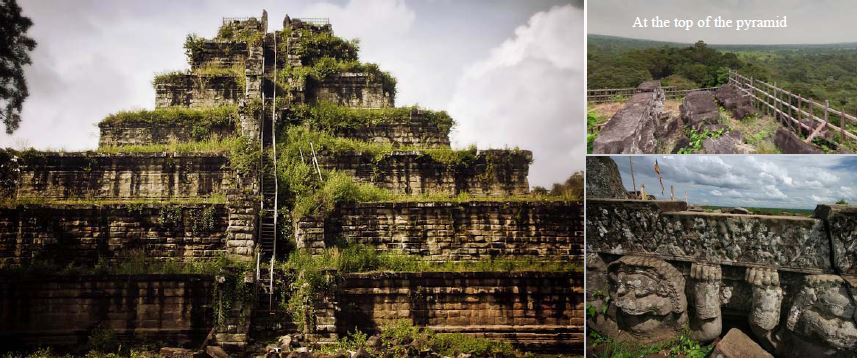
Some parts of the Prasat Thom, including the moat and the inner enclosure, were likely built before 921 AD. The sanctuary was expanded under the reign of Jayavarman IV and has now two surrounding walls inside of the moat. The first wall (inner wall) is made of brick; the second wall (outer wall) with a length of 217 ft. and a breath of 180 ft. is made of laterite. Two doors are in the east and in the west. In the center court is the sanctuary and opposite it are two so called libraries. Nine towers in two rows stand behind the sanctuary on a rectangular platform (one of five, one four towers). Twelve smaller prasats surround the platform. All 21 towers once housed lingas.
Behind the court with the pyramid is an artificial circular hill named Tomb of the White elephant. "The white Elephant" is a well-known legend in Southeast Asia. There are different theories about the hill. Some say that this structure could be the foundation of a second pyramid, or that it could be the grave of Jayavarman IV.
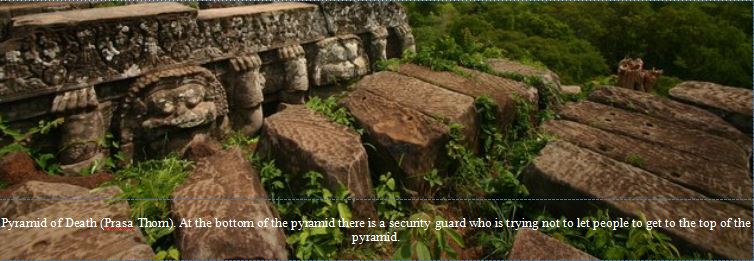
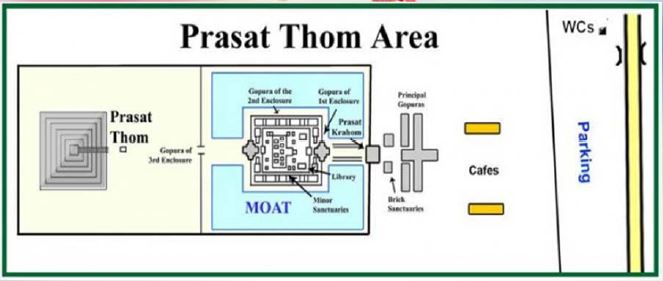
Also located within the Prasat/Prang complex behind the ruins of the entrance-pavilion and the laterite towers is an impressive red brick tower, called Prasat Krahom (krahom = red).
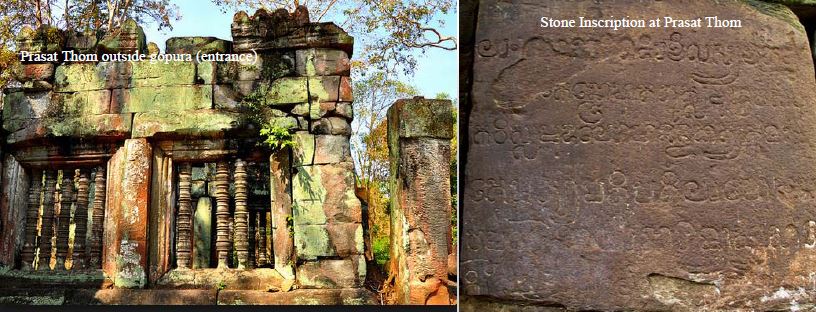
Srah and Baray
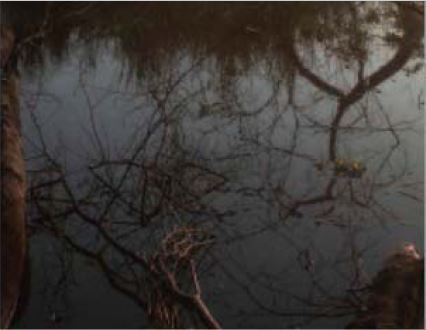
Srahs and barays are reservoirs, or water-tanks, generally created by excavation and embankment, respectively. It is not clear that the significance of these reservoirs was religious, agricultural, or a combination of the two.
Rahal
The huge Baray (water-tank) called Rahal is the largest object at the site of the ancient capital Koh Ker. Its length is about 1,312 yd and its breadth is about 612 yd. The water-tank has three dams covered by steps of laterite. The orientation of the Rahal is not from east to west like the huge water-reservoirs in Angkor; it follows an orientation of North 15° West. Because the most important monuments at Koh Ker have the same orientation one can conclude that the Baray was constructed first for them. The Rahal was carved out partly of the stone ground, but it is not clear if a natural hollow was the reason for its orientation. Currently most parts of the Baray are dried out and covered by grass. Some puddles can be seen in the corner next to the double-sanctuary.
13. Trapeang Andong Preng
(see map above)
Located 219 yards south of the double-sanctuary, Prasat Thom/Prang, a basin is dug into the earth with a length of 44 yards. It has steps of laterite on all sides. During the rainy season the water stands to a depth of 23 ft. The Trapeang Andong Preng does not belong to a temple. But it could have been a royal bath, because near this place was once the wooden palace of the king.
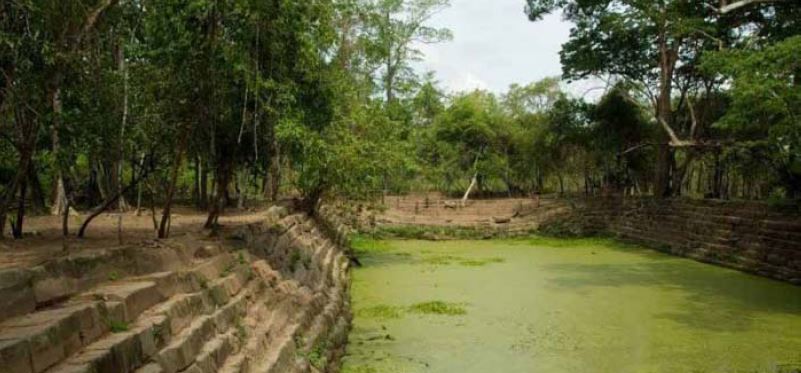
14. Parsat Chen
(see map on page 20)
Prasat Chen (Chinese Temple) is on the west side of the street. It belongs to the north Koh Ker temple group. Three laterite towers (partially collapsed) stand on the same platform. In front of them are the remains of two brick libraries. Perhaps, it can be described as towers of Vishnu god standing on a vast battle field. It has two enclosures. There are two pavilions at the entrance of the first enclosure, one represents the battle of two monkeys (Valin and Surgriva) and the other, the battle of Bhima and Duryodhana in the Hindu epic Ramayana. The main entrance door (now collapsed) was itself a sanctuary with a square central room (one side measured 4 m (13 ft)). A fragment of a multi-armed statue of Vishnu was found in front of the tower in the middle. In this temple are five inscriptions. They mention the names of all the numerous peoples connected to the temple site and their function.
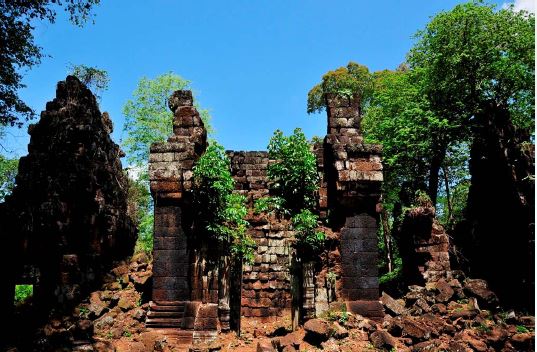
An ancient statue of a Hindu god believed to be more than 1,000 years old was discovered under roots of a tree in April 2012.
It had been excavated and sent to the Preah Norodom Sihanouk Museum, in Siem Reap province. It is a statue of Preah Neareay, with four arms, but the arms are broken off at the shoulders, there is no head and the legs are broken at the knees.
The Ancient Khmer City of Koh Ker is researched by Ben Bao and Lowell Cole.
http://en.wikipedia.org/wiki/Koh_Ker
http://en.wikivoyage.org/wiki/Koh_Ker
http://www.canbypublications.com/maps/SR-KohKerMap.htm
http://www.lonelyplanet.com/cambodia/northwestern-cambodia/koh-ker
http://www.peaceofangkorphoto.com/koh-ker.html
http://www.tourismcambodia.com/travelguides/provinces/preah-vihear/what-to-see/394_koh-ker-temple.htm




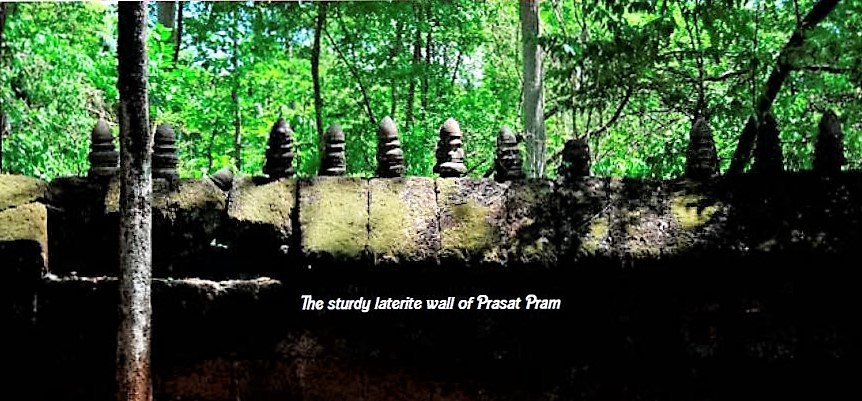







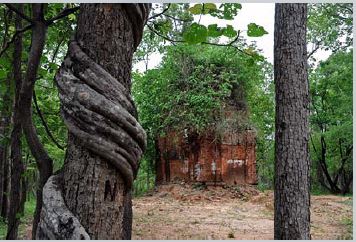


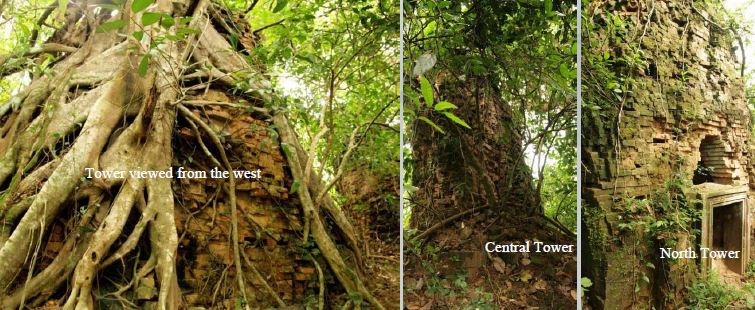





 Srahs and barays are reservoirs, or water-tanks, generally created by excavation and embankment, respectively. It is not clear that the significance of these reservoirs was religious, agricultural, or a combination of the two.
Srahs and barays are reservoirs, or water-tanks, generally created by excavation and embankment, respectively. It is not clear that the significance of these reservoirs was religious, agricultural, or a combination of the two.


